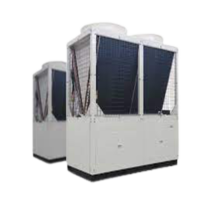Chiller Troubleshooting Guides
Chiller troubleshooting guides includes diagnosing and resolving common issues which will arise during operation. Here are a few general investigating steps and guides for tending to common chiller problems:
No Cooling or Insufficient Cooling:
- Check the thermostat settings and guarantee they are correctly adjusted for the specified temperature.
- Verify that the chiller is accepting power which all electrical connections are secure.
- Inspect the air channels and condenser coils for soil or debris which will be obstructing airflow. Clean or replace channels as required.
- Check for refrigerant leaks and ensure that the refrigerant charge is at the correct level.
- Assess the evaporator and condenser coils for earth, scale, or fouling that will be influencing heat transfer. Clean the coils if necessary.
Compressor Issues:
- Check for unordinary noises or vibrations coming from the compressor, which may show mechanical problems.
- Screen compressor suction and release pressures and temperatures to detect variations from the norm.
- Inspect the compressor oil level and condition. Low oil levels or contaminated oil can influence compressor performance.
- Check compressor suction and discharge valves for appropriate operation and leakage.
Water Flow Problems:
- Verify that the chiller water flow rate and pressure are within the suggested range.
- Check for clogged or limited water filters, strainers, or valves that will be impeding water flow.
- Inspect pump operation and engine condition. Ensure that pumps are running easily which motor bearings are properly lubricated.
High Condenser Pressure:
- Check for air or non-condensable gasses trapped within the refrigerant circuit, which can increase condenser pressure. Purge air from the system in case necessary.
- Inspect the condenser coils for soil, debris, or scaling that will be reducing heat transfer productivity. Clean the coils as needed.
- Verify that the condenser fans are working properly which airflow isn’t deterred.
Low Refrigerant Charge:
- Check for refrigerant leaks utilizing electronic leak detectors or UV dye tests. Repair leaks and revive the system with the suitable refrigerant.
- Monitor suction and release pressures and temperatures to confirm appropriate refrigerant charge levels.
- Guarantee that service valves are completely open which the system is appropriately evacuated and charged amid maintenance methods.
Safety and Alarm Issues:
- Monitor chiller control board shows for error codes or caution notices. Refer to the manufacturer’s manual for investigating guidance related to particular alarm codes.
- Verify that security devices such as pressure switches, temperature sensors, and stream switches are functioning accurately.
If investigating endeavors don’t resolve the issue or in case the issue endures, it may be necessary to consult to refer to with a qualified HVAC specialist or chiller benefit provider for assist conclusion and repair. Normal preventive upkeep and periodic assessments can help recognize potential issues some time recently they raise into major problems.

